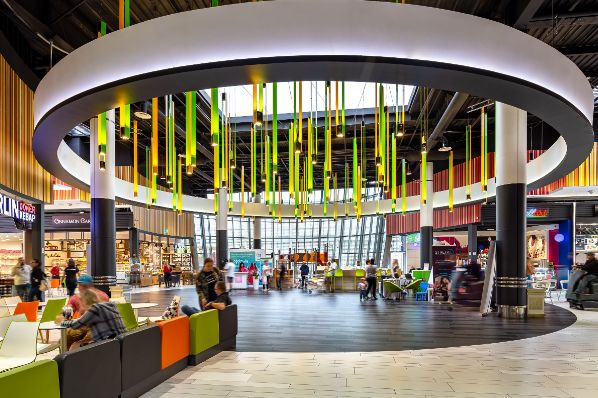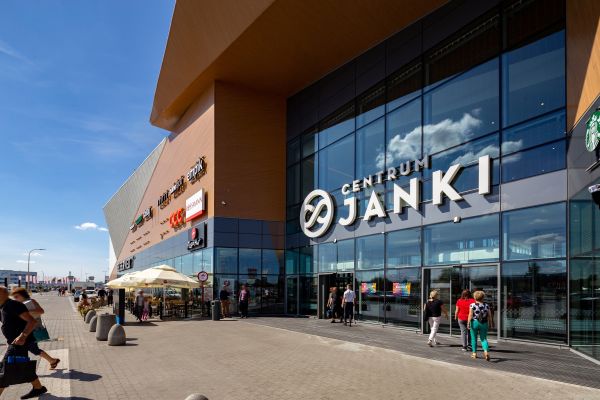The last decade has seen steady improvements to the business environment and the competitiveness of the economy. Poland holds the thirty-third place out of 212 economies worldwide as ranked by the World Bank ‘Doing Business Survey 2019’. The country has been one of the largest beneficiaries of EU funding – in the region of €120bn between 2014 and 2020 – with infrastructure projects benefitting. This in turn has opened up the country beyond the capital with Krakow, Wroclaw, Lodz, the TriCity region of Gdansk, Gdynia and Sopot, Poznan and Katowice all receiving business interest.
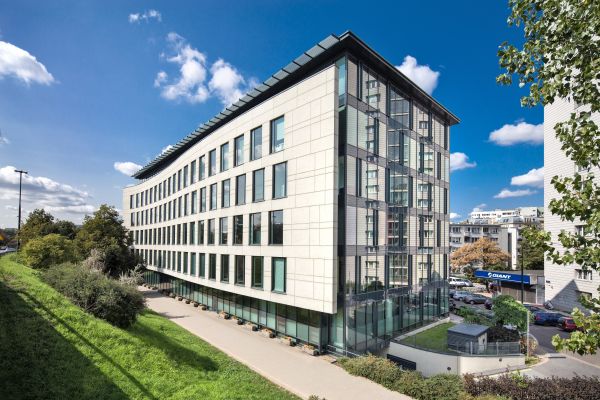
Riverside office building, Warsaw, Poland.
The population of Poland is 38 million– making it the sixth most populated country in the EU and the largest market in Central & Eastern Europe (CEE). Furthermore, with the country’s student population in the region of 1.5 million, this has helped to draw in international companies including Google, Unilever, Samsung, Sanofi amongst others who have established R&D centres.
Opportunities in the office sector across the risk curve
There is 10.8 million m² of modern office stock across Poland, of which half is located in the capital. 2019 saw modern stock levels in Warsaw exceed the 5 million m² mark, reaching 5.5 million m² as at June 2019 – 40% in the City Centre submarket of the capital and the remaining 60% in the Non-Central areas.
Even though some schemes in the city centre have been postponed, there is a significant amount of space being developed with approximately 800,000m² under construction and due to complete by the end of 2021. There is a concentration of development activity in the more central locations, which are more accessible and served by more transport connections. Despite the number of expected deliveries, the robust occupational demand has seen the vacancy rate in Warsaw trend down to around 8.5%, with the trend expected to continue hitting 8.0% by the end of 2019 and 7.6% by the end of 2020. This does, however, mask the inclusion of some older stock, which is harder to let but ripe for redevelopment and/or repositioning.
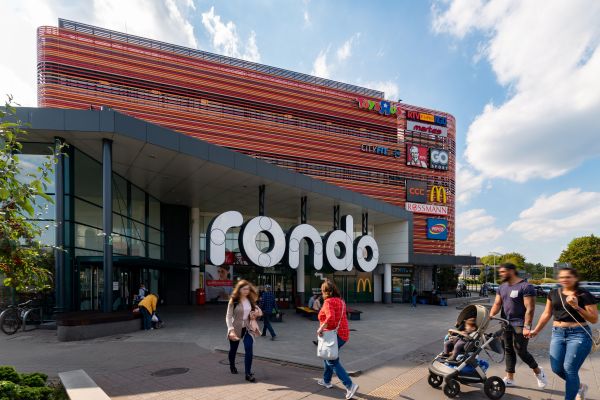
Rondo Shopping Centre, Bydgoszcz, Poland.
Warsaw is typically the location of choice of new occupiers to the Polish market and those that arrived a few years ago are now expanding into regional cities, supported somewhat by the gathering momentum of co-working space, which is de-risking the process for companies wanting to test the water in the regional cities by providing short-term space until they can secure alternative accommodation suitable for their long-term needs. Regional cities play an increasingly important role for Business Process Outsourcing (BPO), Shared Service Centres (SSC) and Research & Development Centres, supported by a skilled labour force that is still one of the lower cost markets compared to other European countries.
Going forward, construction costs are expected to rise Indeed, signs of this have already been seen in the market, and alongside increasing land prices and material costs developers have little choice but to try to pass these costs to tenants by increasing rents, while others look for the value-add play on the repositioning of older stock.
Experiential retail supported by a dynamic consumer demographic
The Polish retail market is the most sophisticated in the wider CEE region with approximately 15 million m² of modern retail space. The majority, over two-thirds, of the stock is shopping centres, followed by retail parks and outlet centres, although the latter are in their infancy.
High street retailing is not commonplace in Poland, although the re-development of some of the older high streets in Warsaw are beginning to come back into favour as alternative locations, diversifying expansion strategies for retailers. But it remains to be seen just how successful this resurgence is as the subsector is still highly fragmented while consumers continue to demand more from their retail experience that shop units may struggle to provide.
The last 24-36 months has seen development slow with only 400,000m² expected to complete in 2019 – one of the lowest levels seen for two decades. A similar amount is anticipated for 2020, emphasising the significance of existing schemes and the proactivity of landlords to offer a range of retailers, services, experiences and leisure to consumers.
Smaller cities with a population of around 100,000 inhabitants are moving up the opportunity scale with almost half of new supply under construction located in these cities – either as new schemes or the expansion of existing centres. Retailers are, however, demonstrating a clear preference for high footfall locations and quality stock that offers food & beverage and leisure elements, as these factors increase consumer dwell time and the potential to positively impact their bottom line. So, when considering exposure to secondary and tertiary locations, retailers need to ensure that any scheme offering as their own, is in line with local demographics and income profile, adjusting their portfolios where necessary.
The continued rise of e-commerce and the Sunday Trading Ban that came into effect on 1 March 2018 (beginning with a ban on two Sundays a month, extending to all in 2020) are testing the agility and flexibility of both tenants and landlords. This has resulted in some polarisation in the sector and success will lie in the active management of schemes by landlords as well as businesses ensuring that they are adjusting their business models to cope with, and embrace, the structural changes that are taking place in the retail sector.
Infrastructure developments opening-up the country’s industrial sector for further investment
As the seventh-largest industrial market in Europe, Poland stands out as the largest and arguably the most significant market in Central & Eastern Europe. Total stock is just shy of 17 million m² including the 1.1 million m² added in H1 2019. A further 2.2 million m² is currently under construction, of which 45% is speculative indicating the confidence of developers in the depth of occupier and investor demand in the market. Despite the record levels of new supply, the vacancy rate only increased marginally to 5.7% nationwide in Q2, up from 5.4% at the end of March.
Take-up over the first six months of the year was in excess of 1.6 million m². Greater Warsaw is still the most popular market but encouragingly there is evidence of demand from across the country’s main hubs. While the volume of new contracts and expansions has scaled back somewhat, a large amount of occupier activity is accounted for by renegotiations as existing companies solidify their footprint. The main drivers of demand are logistics operators, retailers and companies operating in the light manufacturing space, which accounted for almost 80% of occupier activity over the first six months of 2019.
Janki Shopping Centre, Janki, Poland.
Positive rental growth has been noted but rising land and construction costs and the availability and cost of appropriately skilled labour will factor more significantly as the market matures, impacting on the pace of rental growth. However, as infrastructure developments complete the country will open up further, providing opportunities for those prepared to move cautiously up the risk curve. Indeed, there is evidence that some developers are land banking sites in less well-known locations such as Kielce and Podkarpacie for future development purposes.
Property Investment Activity:
At Cromwell, we’ve been operating in Poland and further afield across the CEE region for more than ten years, having invested in and managed assets in the retail, office and logistics sectors. Recently, we gave a very clear indication of how positive we are on Poland by exercising our pre-emptive right to buy out investors in the Cromwell Polish Retail Fund (CPRF).
Despite a muted start to the year with only €1.7bn of property exchanging hands in Q1, the market regained its momentum in Q2. While there has been a steady influx of European capital over the past decade, more recently there has been an uptick in Asian capital, spearheaded by Singaporean and South Korean investors. Chinese activity dropped off following the implementation of capital controls on overseas investments.
Offices are by far the most sought-after assets accounting for 70% of investor activity in Q2 with Warsaw dominating (48% of Q2 deals). However, regional offices markets such as Wrocław and Kraków, which are experiencing rising levels of investor activity, are able to offer quality stock as development construction gathers pace, albeit from low levels, and attractive yields spread over the capital. This is expected to move further afield as some of the Tier III locations work hard to attract capital.
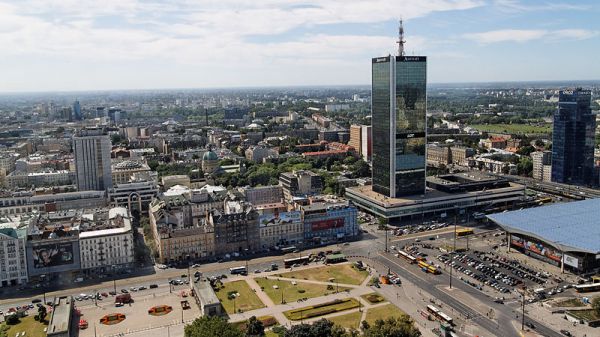
International capital dominates the Polish investor scene and has done for at least the past decade, ranging between 80% - 90% of trading volumes in any year. Those buying are attracted by assets across the risk curve from quality, shiny office buildings in Warsaw where prime yields are in the region of 4.75%, to older buildings in need of redevelopment, offering substantial upside potential.
As e-commerce continues, there is strong appetite for product servicing the changing nature and transformation of the retail sector. Around 15% of all H1 2019 deals were in the industrial and logistics sector. Quality, long-lease assets are trading around the 5.00% mark with the likelihood of further compression of potentially 25 bps - 50 bps as the year progresses. The availability and cost of suitable land parcels for future development may be the main hurdle to higher transactional volumes.
There is more of a mixed picture for the retail sector, but there are most definitely some bright spots. Dominant shopping centres are continuing to perform well trading at around 4.25% in the capital with major second Tier locations 75 bps – 100 bps higher. While yields are not expected to tighten over the next six months, pricing is anticipated to hold firm, turning the focus to active management of centres, providing the right balance between experiential retail and breadth of retailers to satisfy consumer demand for both. Furthermore, strong retail sales growth is driven by rising salaries which in turn will help to support investor appetite for dominant retail schemes, convenience centres and retail parks.
Written by: Mark McLaughlin, managing director of Cromwell Property Group Europe
Karol Pilniewicz, head of CEE at Cromwell Property Group
Joanna Tano, head of research in Europe at Cromwell Property Group
